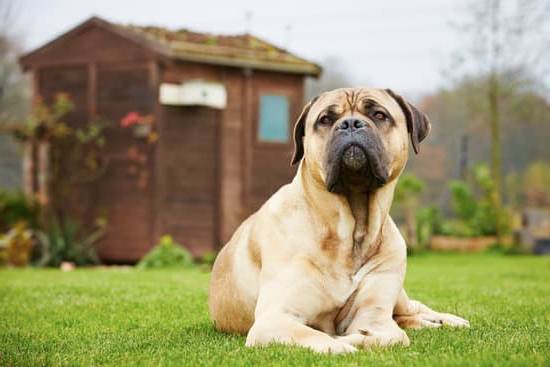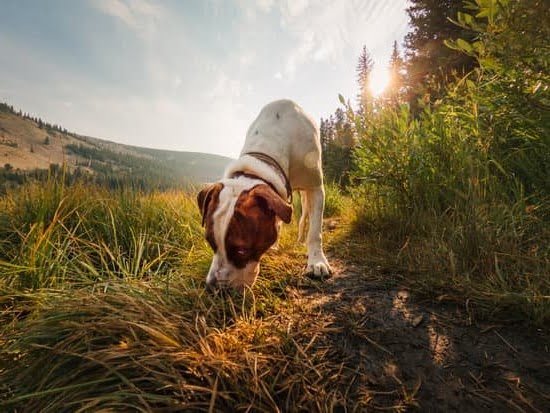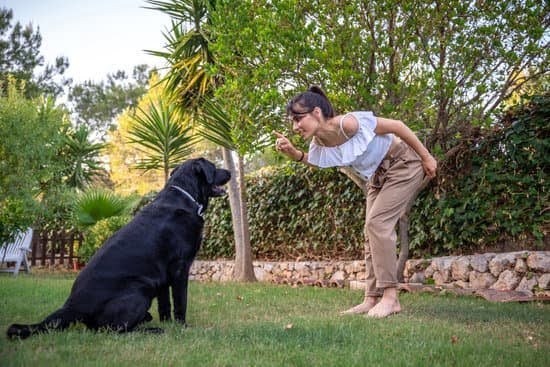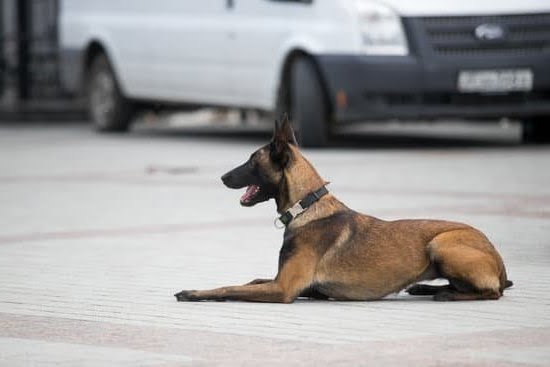House training a two year old dog can be a challenging task, but with the right approach and consistency, it is definitely achievable. In this article, we will explore the specific challenges of house training a dog at this age and provide practical tips and guidance on how to successfully accomplish this important milestone in your pet’s development.
The first step in house training a two year old dog is to understand the unique obstacles that may arise compared to training a younger puppy. From assessing the dog’s current behavior and habits to creating a consistent routine for feeding and bathroom breaks, there are several factors that need to be taken into consideration.
Using positive reinforcement, dealing with accidents, using crate training, addressing separation anxiety or behavioral issues, seeking professional help if necessary, and staying patient and perseverant throughout the process are all key elements of successfully house training an older dog.
Whether you have just adopted a two year old dog or have been struggling with house training for some time, this article will provide you with valuable insights and strategies to help you achieve success in this important aspect of your pet’s care and behavior.
Assessing the Dog’s Current Behavior and Habits
Before embarking on the journey of house training a two year old dog, it is crucial to assess the dog’s current behavior and habits. Understanding where the dog is at in terms of its bathroom routine and overall behavior will help in creating an effective house training plan. Each dog is unique and may have different challenges when it comes to house training, so taking the time to observe and evaluate their current state is essential.
One important aspect to consider when assessing the dog’s behavior and habits is their level of comfort with elimination outside. Some older dogs may have developed a preference for going to the bathroom indoors, which can pose a challenge when trying to transition them to eliminate outside. It’s also important to take note of any signals or cues that the dog may give when they need to go potty, such as pacing, whining, or sniffing around.
Another key factor to assess is the dog’s adaptability to routines. Some dogs may be more resistant to changes in their daily schedule, while others may quickly adapt to a new routine for feeding and bathroom breaks. Understanding the dog’s adaptability will help in creating a consistent house training plan that suits their needs.
In addition, assessing any previous training or behavioral issues is important in understanding how to approach house training. For example, if the dog has previously struggled with obedience or separation anxiety, these issues may need to be addressed alongside the house training process. By carefully assessing the dog’s current behavior and habits, pet owners can tailor a house training plan that fits their individual needs.
| Assessment Factors | Considerations |
|---|---|
| Bathroom preferences | Indoors vs outdoors; signals for needing to go potty |
| Adaptability | Response to changes in routine; ability to adapt |
| Previous issues | Obedience, separation anxiety; addressing prior behavioral challenges |
Creating a Consistent Routine for Feeding and Bathroom Breaks
House training a two year old dog can be challenging, especially if the dog has not been house trained previously. Creating a consistent routine for feeding and bathroom breaks is crucial in establishing good habits and helping the dog understand where and when it should eliminate.
To start, it’s important to feed the dog at the same times each day. This will help regulate their digestive system and make it easier to predict when they will need to go outside. It’s also essential to take the dog outside for bathroom breaks at regular intervals, such as first thing in the morning, after meals, before bedtime, and every few hours throughout the day.
Keys to Creating a Consistent Routine
- Set specific feeding times and stick to them
- Take the dog outside for bathroom breaks at regular intervals
- Use verbal cues or commands to signal that it’s time for elimination
- Establish a designated area for the dog to use as its bathroom spot
Consistency is key when establishing a routine for feeding and bathroom breaks. By being proactive and taking the dog outside before accidents can occur, you are setting them up for success in learning where they should eliminate.
Remember that every dog is different, so it may take some trial and error to find the right routine that works best for your furry friend. Stay patient and persistent in following the established routine, as this is essential in successfully house training a two year old dog. With time and dedication, your efforts will pay off, and you’ll both enjoy a happier, cleaner living environment.
Using Positive Reinforcement and Rewards for Successful Elimination Outside
House training a two year old dog can be challenging, but using positive reinforcement and rewards for successful elimination outside can make the process smoother and more effective. Positive reinforcement involves rewarding your dog for good behavior, in this case, eliminating outside instead of indoors. This method is based on the principle that animals are more likely to repeat behaviors that result in pleasant consequences.
When house training a two year old dog, it’s important to use rewards such as treats, verbal praise, or even playtime immediately after your dog eliminates outside. This helps them associate going to the bathroom in the appropriate place with positive outcomes. Be consistent with your rewards and praise every time your dog eliminates outdoors to reinforce the desired behavior.
In addition to immediate rewards, it’s also helpful to have a consistent routine for feeding and bathroom breaks. By taking your dog out at regular intervals – such as after meals, naps, and playtime – you can increase the likelihood of successful elimination outside.
Over time, your dog will learn that going outside leads to positive reinforcement and rewards, making them more likely to continue this behavior in the long term. Remember that every dog is different, so patience and perseverance are key when using positive reinforcement to house train a two year old dog.
Dealing With Accidents and How to Properly Clean Up
House training a two year old dog can come with its fair share of challenges, including dealing with accidents inside the house. Accidents are bound to happen during the house training process, but it’s important to handle them properly to prevent setbacks and maintain progress. Understanding how to clean up after accidents is crucial in teaching your dog where it is appropriate to eliminate.
When accidents occur, it’s important to remain calm and refrain from scolding or punishing the dog. Instead, focus on cleaning up the mess promptly and thoroughly. Use an enzymatic cleaner specifically designed for pet odors to completely remove the scent of the accident, as dogs have a strong sense of smell and may be inclined to eliminate in the same spot if any odor remains.
In addition to cleaning up accidents effectively, it’s essential to keep a close eye on your dog for signs that they need to eliminate, such as sniffing, circling, or pacing. By being attentive and proactive, you can help prevent accidents from happening in the first place. Consistency and patience are key when addressing accidents during the house training process for a two year old dog.
Using Crate Training as a Tool for House Training
Crate training can be a very effective tool when it comes to house training a two year old dog. Here are some key points to keep in mind when using crate training as part of your house training strategy:
- Choose the right crate: It’s important to select a crate that is just the right size for your dog. The crate should be large enough for the dog to stand up, turn around, and lie down comfortably, but not so large that it gives them the option to eliminate in one corner and still have plenty of space to sleep in another.
- Gradual introduction: Introduce the crate gradually, allowing your dog to explore it at their own pace and associating it with positive experiences such as meals and treats inside the crate.
- Use the crate for short periods: Initially, use the crate for short periods of time when you are home, gradually increasing the duration as your dog becomes more comfortable with it.
Crate training can also help prevent accidents indoors by confining your dog when they cannot be supervised. However, it’s essential to ensure that your dog does not spend too much time in the crate, as this can lead to boredom and anxiety. Remember that consistency, patience, and positive reinforcement are crucial when using any house training method, including crate training.
Addressing Any Separation Anxiety or Behavioral Issues That May Hinder House Training
House training a two year old dog can be challenging, especially if the dog has developed certain behavioral issues or separation anxiety. These issues can hinder the house training process and make it more difficult to establish a consistent routine for bathroom breaks. It’s important to address these issues before or during the house training process to ensure successful results.
One of the first steps in addressing any separation anxiety or behavioral issues is to assess the dog’s current behavior and habits. Understanding the root cause of these issues can help determine the best approach for addressing them.
For example, if the dog becomes anxious and exhibits destructive behavior when left alone, it may be experiencing separation anxiety. On the other hand, if the dog has a tendency to eliminate in the house out of habit or lack of proper training, it may require a different approach.
Once you have identified any separation anxiety or behavioral issues that may be hindering house training, you can work on creating a plan to address them. This may involve seeking professional help from a veterinarian or animal behaviorist, implementing specific training techniques to target these issues, and making adjustments to your routine to accommodate your dog’s needs.
Additionally, using positive reinforcement and rewards for good behavior can be effective in addressing separation anxiety and other behavioral issues. This can help build confidence in your dog and create positive associations with being alone or following a new routine. With patience and perseverance, you can work through these challenges and successfully house train your two year old dog.
| Challenges | Solutions |
|---|---|
| Separation anxiety and destructive behavior | Assessing behavior and seeking professional help if necessary |
| Lack of routine and consistency | Creating a plan to address behavioral issues and establishing a consistent routine |
Seeking Professional Help or Guidance if Necessary
House training a two year old dog can be a challenging task, especially if the dog has not been previously trained or has developed bad habits. Despite consistent efforts and dedication, some pet owners may find it difficult to house train their older dogs on their own. In such cases, seeking professional help or guidance can be beneficial in achieving success.
When to Seek Professional Help
It’s important to recognize when you may need professional assistance with house training your two year old dog. If you have tried various methods and techniques without seeing any improvement in your dog’s behavior, it may be time to seek the expertise of a professional dog trainer or behaviorist.
Additionally, if your dog displays signs of anxiety or aggressive behavior during the house training process, it is crucial to consult with a professional who can address these issues effectively.
Consulting With a Dog Trainer or Behaviorist
A professional dog trainer or behaviorist can assess your dog’s specific needs and develop a tailored plan for successful house training. They can provide valuable insights into your dog’s behavior and offer effective strategies for addressing any challenges that arise during the training process. They can also guide you on how to implement positive reinforcement techniques and create a consistent routine that works best for your two year old dog.
The Benefits of Professional Guidance
Seeking professional help for house training your two year old dog offers numerous benefits. Not only does it ensure that you receive expert advice and support, but it also gives you access to valuable resources and tools that are essential for successful training. With the guidance of a professional, you can gain confidence in handling your dog’s behavior and develop a deeper understanding of how to effectively house train a two year old dog.
By seeking professional assistance when necessary, pet owners can overcome challenges more effectively and achieve long-term success in house training their two year old dogs.
Patience and Perseverance
House training a two year old dog can be a challenging task, but with patience and perseverance, it is definitely achievable. It’s important to keep in mind that older dogs may have already developed certain habits that can be harder to break. However, with the right approach and consistency, you can successfully house train your two year old dog.
Set Realistic Expectations
It’s important to understand that house training a two year old dog may take longer than training a puppy. This is because older dogs may already be set in their ways and it will take time for them to adjust to new habits. Setting realistic expectations from the beginning can help you stay patient and motivated throughout the process.
Consistency Is Key
Consistency is crucial when house training a two year old dog. This means sticking to a consistent routine for feeding, bathroom breaks, and exercise. Dogs thrive on routine, so establishing a predictable schedule will help them understand when and where they are supposed to eliminate.
Stay Positive and Patient
Using positive reinforcement such as treats, praise, and rewards for successful elimination outside can go a long way in house training your two year old dog. It’s also important to remain patient and understanding when accidents happen. Yelling or punishing the dog will only create fear and confusion, making the house training process more difficult.
By following these tips for staying consistent and motivated throughout the house training process, you can effectively house train your two year old dog. Remember that every dog is different, so it’s important to tailor your approach based on your dog’s individual behavior and needs. With patience and perseverance, you’ll eventually celebrate success and maintain good habits for the long term.
Celebrating Success and Maintaining Good Habits for the Long Term
House training a two year old dog can be challenging, but with patience and perseverance, it is definitely achievable. By understanding the challenges of house training a mature dog and assessing their current behavior and habits, you can create a consistent routine for feeding and bathroom breaks.
Using positive reinforcement and rewards for successful elimination outside will help reinforce good habits. Accidents are inevitable, so knowing how to properly clean up and using crate training as a tool for house training can be very helpful.
In addition, addressing any separation anxiety or behavioral issues that may hinder house training is crucial. Seeking professional help or guidance if necessary can provide valuable insight on how to address these issues effectively. It’s important to remember to stay consistent and motivated throughout the house training process, as it may take time for your dog to fully grasp the concept.
Celebrating the small victories along the way is also important. Every successful elimination outside is a step in the right direction. Maintaining good habits for the long term will require dedication and patience, but with time and effort, your dog will become reliably house trained. Remember that every dog is different, so it’s essential to find what works best for your four-legged friend when it comes to house training them at two years old.
Frequently Asked Questions
Is It Too Late to Potty Train a 2 Year Old Dog?
It’s not too late to potty train a 2-year-old dog, but it may require more patience and consistency. Older dogs can still learn new habits with the right training approach.
Can a 2 Year Old Dog Be House Trained?
A 2-year-old dog can definitely be house trained. The key is to establish a routine, provide positive reinforcement, and be diligent in supervising the dog to prevent accidents inside the house.
Can a Dog Be Trained After 2 Years Old?
Dogs can be trained at any age, even after 2 years old. While it may take more time and effort compared to training a puppy, older dogs are still capable of learning new commands and behaviors with proper training techniques and consistency.

Welcome to the blog! I am a professional dog trainer and have been working with dogs for many years. In this blog, I will be discussing various topics related to dog training, including tips, tricks, and advice. I hope you find this information helpful and informative. Thanks for reading!





